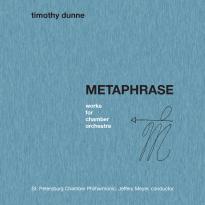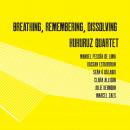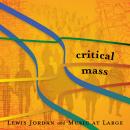Metaphrase
Metaphrase
Spencertown, NY
| Metaphrase: Works for Chamber OrchestraiTunes Artist's PageiTunes Album Page | |||
|---|---|---|---|
| Song Title | Time | Price | |
| 1. | Braid | 13:14 | |
| 2. | Ground | 06:26 | $0.99 |
| 3. | Margarita Metaphrase | 11:11 | |
| 4. | Piano Concerto: I. Allegro risoluto | 05:06 | $0.99 |
| 5. | Piano Concerto: II. Lento - Vivo | 08:04 | $0.99 |
| 6. | Piano Concerto: III. Allegro giocoso | 06:40 | $0.99 |
If you’ve never been to St. Petersburg, Russia, it can be difficult to describe its particular strangeness; the slightly otherworldly quality captured so well by authors from Gogol to Dostoevsky to Colum McCann. When New York native Timothy Dunne went to Russia to study with Sergei Slonimsky at the State Conservatory of St. Petersburg, he found its “otherness” to be an ideal space in which to shift a career based on performance to one based on writing. There, he had to work through different musical, cultural and linguistic challenges, ultimately crafting works The New York Times would call “strikingly written.” His innova Recordings debut, Metaphrase, is a collection of those works.
The album’s title comes from the term for a creative chain reaction by which one artwork -- literary, musical or otherwise -- inspires a conscious re-telling or re-fashioning. This concept opens the album with Braid, a metaphrase on Dunne’s own Ribbon. It comes to the fore in Margarita Metaphrase, written in appreciation for Slonimsky and appropriating music from his 1972 chamber opera based on Mikhail Bulgakov’s novel, The Master and Margarita.
Throughout, Dunne’s works reveal a rich and turbulent creativity in search of a fresh, modernist grammar. Would the kind of fracturing, reassembling and exploration that he finds himself pursuing have been possible without the influence of St. Petersburg on Dunne’s work? The tricky thing is that eventually, the threads that make up something become so woven together as to be inextricable. Writing about these works, Nigel Osborne said Dunne’s compositions constitute “a field of complete originality where atonality meets the ghosts of tonality, and figure meets ground in a wild and open space.”
"Works of intricate construction and sometimes surprising turns of direction by New York-born composer Timothy Dunne, a former student of Sergei Slonimsky at the State Conservatory of St Petersburg. The playing by the St Petersburg Chamber Philharmonic (to which Dunne has been an artistic advisor) is exquisite, capturing the particular hovering, shadowy qualities of Dunne’s music." [FULL ARTICLE] - Tim Rutherford-Johnson
The music of the New York composer Timothy Dunne is a celebration of the movement: everything is in perpetual becoming, underground and latent energy flows are waiting for the right moment to emerge from the woods micropolifonie Ligetiana of memory - in turn influenced by the intricacy rhythm of African music, filtered through a western scientific approach and modernist - until it flows into rhythmic passages of great density and vitality. The glittering orchestration attenuates the sinister atmosphere that inevitably frequent harmonic dissonances tend. Nothing in these compositions for chamber orchestra, will warm your heart; but neither, I think if you listen with proper attention, will they leave you indifferent. - Kathodik
AMERICAN RECORD GUIDE
“From a Russian composer of an older generation to an American who studied in Russia: Timothy Dunne’s record Metaphrase is a collection of works that followed his move from one continent to another and from one mode of musical production to another. Studying at the State Conservatory of St Petersburg, Dunne went from performer to composer producing work that is remarkably performer-centric. Rather than more traditional musical boundaries like singable melodic coherence and regular phrases, this music is driven by sound and noise, gesture, and physicality. Instrumental experimentation and the free, almost stream-of-consciousness kind of frenetic expression in works like Braid seem to suggest near or partial improvisation. Chirping and sliding harmonics, boisterous noise, and eerie soundscapes are complemented by sincere, expressive vocals and soloistic passages. It is difficult to sum up Dunne’s music because of its dynamism and flexibility-seemingly nothing is out of bounds. ANd yet a consistent and compelling compositional voice emerges.“



